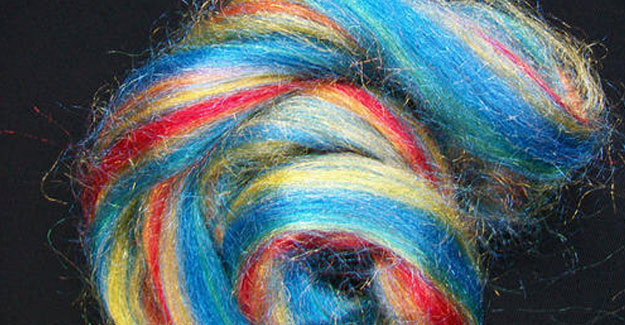
Domestic MMF Textile Industry Gears Up To Boost Exports
The Synthetic & Rayon Textiles Export Promotion Council (SRTEPC) has chalked out a comprehensive plan to diversify the country's MMF textile export basket to newer countries. This follows the MMF textile exports from the country stagnating in the last few years, even as the government has set up an export target of US$ 15 billion by 2025 as against exports of around US$ 6.4 billion at present. Geographical diversification will not only help increase exports but also de-risk the exports from the country in the fast changing global market. Moreover, the move has also come in as a strategy to take advantage of opportunities arising out of US-China trade war which is all set to redefine the global trade order going ahead. In fact, many of the countries who have been sourcing their MMF textiles requirements from China, are now looking at alternatives and for them India is emerging as one of the preferred options. Besides, as the overall input cost is increasing, China is looking to move out of low-value manufacturing activities like textiles, and thus opening up huge opportunity for other textile manufacturing countries like India. "It is high time that as a country, we increase our share in the MMF segment. Our lopsided textile value chain skewed heavily in favour of natural fibres, has adversely impacted the overall growth of the textile industry which in the last couple of decades has undergone a transition. We have not been able to move up in the value chain and moreover our competitive edge has been blunted severely," says Ronak Rughani, chairman, SRTEPC, adding that in the last few years, the council has been putting up concerted efforts to promote the country's MMF textile industry. The recently organised 4th edition of "Source India 2019" exhibition by the council to showcase India's capabilities in the MMF textile sector, received an impressive response as buyers and industry representatives from 40 countries including Guatemala, Argentina, Colombia, Peru, Brazil, Mexico, South Africa, Uganda, Kenya, Nigeria, Egypt and Morocco attended the event in Mumbai. Around 180 leading buyers from 40 countries and 20 international buying houses visited to place orders for forthcoming season. The event saw global buyers placing close to US$ 250-300 million worth of orders to Indian companies As part of diversification, SRTEPC has already initiated talks with countries including Central Asian nation, Uzbekistan as also Central American country, Guatemala. Both the nations have shown their keen interest in strengthening their trade tie with India, and sourcing their synthetic textiles requirement from the country. For Indian exporters, both these countries can turn out to be potential destinations since both of them, Uzbekistan and Guatemala are strategically placed and are gateway to CIS and US markets, respectively. Guatemala has preferential trade agreement with the US and hence enjoys duty-free access to the large US market, while Uzbekistan has free trade agreement with CIS. "We would like to invite Indian companies to set up businesses in Uzbekistan in the MMF textile sector where India has very good capabilities across the value chain. We are looking to strengthen our base in synthetic textiles, even as Uzbekistan has reasonable presence in the cotton segment. Uzbekistan offers multiple fiscal and other incentives to attract foreign investments and here India being our traditional trade partner, can explore the advantages in an effective manner," said Rustam Babakulov, director, foreign economic relations, Uzbekistan during his visit to SRTEPC-organised exhibition in Mumbai recently. "Guatemala can provide big opportunity for Indian businesses and exporters. We are looking to build up our presence in the MMF segment and looking to source raw material from India. We consider India as a quality supplier (when compared with China) and hence looking to scale up our relationship. This will be a win-win proposition for both the countries," stated one of the visiting trade representatives from Guatemala at the exhibition. "The domestic MMF textile industry is facing structural issues. Inverted tax structure under GST, where raw materials are attracting higher duties, is adversely impacting the industry. We have to give this segment a level playing field, even as cotton continues to be our core strength. The government has taken note of various issues plaguing the growth of this segment and we soon expect a conducive atmosphere in place," says Sanjay Jain, chairman, Confederation of Indian Textile Industry. A recent report by Niti Aayog has recommended removal of inverted duty structure on manmade fibres. It has also proposed abolition of anti-dumping duty on purified terephthalic acid (PTA) and viscose staple fibre. Experts are of the view that there is urgent need to promote the domestic MMF textile industry and project India as a global textile sourcing hub and investment destination. The increased share of MMF in our textile value chain will impart more versatility and adaptability to our textile value chain. India's per capita MMF consumption is abysmally low at 3 kg as against China's 11 kg and global average of 6 kg. This gives huge scope for India to focus on the growth of MMF in the entire textile value chain.
Textile Excellence
If you wish to Subscribe to Textile Excellence Print Edition, kindly fill in the below form and we shall get back to you with details.








